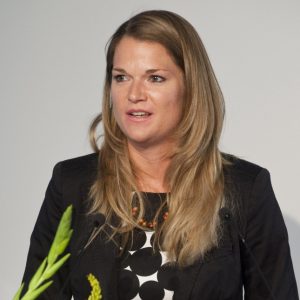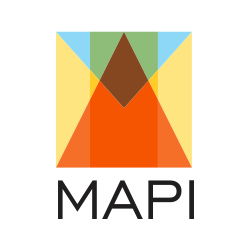Em uma das últimas atividades do ano passado, alunos e alunas do MAPI tiveram a oportunidade de encontrar com Nadine Piefer, analista política das relações globais do Comitê de Ajuda ao Desenvolvimento, da Organização para a Cooperação e Desenvolvimento Económico (DAC Global Relations). O encontro aconteceu no BRICS Policy Center e Nadine apresentou os dados do último questionário aplicado pelo DAC sobre cooperação triangular/trilateral. Na ocasião a aluna do MAPI, Alexandra Teixeira, realizou uma entrevista com Nadine, que refletiu sobre o debate atual e novas práticas no âmbito do DAC, tendo em vista o crescente engajamento de atores da Cooperação Sul-Sul no campo da Cooperação Internacional para o Desenvolvimento.
Interview with Nadine Piefer (Policy Analyst – DAC Global Relations – OECD)
BRICS Policy Center, Rio de Janeiro, November 10th, 2017.
Alexandra Teixeira, MAPI student: First, thank you very much for this interview. It is a great honour to welcome you to the BRICS Policy Center. Our main goal with this conversation is to get more information about the current conceptual debates and practical experiences of development cooperation. My first question would be: What are the challenges and opportunities raised by the growing number of new actors in development cooperation? How the rise of non-DAC donors challenges the aid governance?

Nadine Piefer, analista política das relações globais do Comitê de Ajuda ao Desenvolvimento, da Organização para a Cooperação e Desenvolvimento Económico (OCDE)
Nadine Piefer: Well, first of all, thank you for asking me for this interview. I think this is an excellent question also in terms of where we stand with the Agenda 2030. Agenda 2030 presents a completely new conceptual development cooperation agenda, where all the countries in the world are addressing development issues. Everyone needs to work together to achieve the Sustainable Development Goals and I think the new actors in development, as you call them, have triggered a very good change. Emerging economies have shaken the DAC to wake up to today’s co-operation architecture, to a new global configuration of power relations. A new mandate was agreed during the high-level meeting of the Development Assistance Committee that happened last week, on the 30th and 31st of October. One of the key aspects was to enhance outreach and work more with countries beyond the DAC membership. Hence, also in the DAC there has been recognition of the importance of these actors. Of course there is always a different way to quantify development cooperation and assess financial flows, but according to the information that we collected, there is a huge share of international cooperation coming from non-DAC members. According to the last data we have, from 2015, this represents 13% (considering also that this data is not an accurate number). Non-DAC countries have become very important in the international development cooperation architecture and I think the SDGs give us a great opportunity to work together towards development.
AT: Regarding the millennium paradigm, to what extent do you think it is a global consensus? What are the strategies led by DAC for a worldwide implementation of this new agenda?
NP: I have a very short answer to this question. In a way all of our work is aligned with the Agenda 2030, so everything we do is aligned to achieve the Sustainable Development Goals. And this is also the case for the different networks that our members are involved, for example, we have different thematic networks under the DAC’s umbrella, like environnet, gendernet, evalnet. Despite looking at different issues of development and of the SDGs, all of the work within these different networks is guided by the SDGs, especially by SDG 17 on partnerships.
AT: How triangular cooperation can help improve the effectiveness of aid in achieving monitorable development outcomes?
NP: I think in general triangular cooperation is a modality that is still underrated, or often seen as an end in itself. As if triangular cooperation was a concept to work on, and not to have a specific development issue to address. I think the overall effectiveness of development cooperation would be improved if there were more flexibility in the thinking of the instruments and modalities. Let me take an example from the European Union: When setting up a large program like EUROCLIMA here in Latin America and the Caribbean, this can be done through bilateral cooperation, regional cooperation or trilateral cooperation. There are different ways for the program to move forward. In this project, I think it was great that they decided that one of the different components of the program would be implemented through triangular cooperation. That is how I would see the role of triangular cooperation in achieving the SDGs. When any development actor decides on a new program or project, triangular cooperation is one of the options at hand and it can be chosen if this is the best way to achieve the objectives. It should not be just chosen for the sake of working with triangular cooperation, but if this is the best way to achieve the goals of the project. This way it can also lead to more effectiveness in development cooperation.
AT: Thank you so much for your input on how the modalities should be chosen. Lastly, regarding future scenarios, what sort of roles private actors and civil society might play in this new era of development cooperation?
NP: I think that is one of the big questions everyone has at the moment when looking at the SDGs or the Agenda 2030. It is agreed that the private sector is a key enabler to development. Of course, not all kinds of private sector involvement, like trade investments, would necessarily be considered development cooperation. The DAC was working on and adopted last week, in the DAC’s high-level meeting I mentioned, the so-called blended finance principles, regulating the leverage of ODA in working with the private sector. When we also look at triangular cooperation there are some very successful projects, in which the private sector can play a good role. I am thinking, for example, of a project in Mexico that involved the Mexican Retail Association and built a platform across Central American countries, together with Germany, facilitating business opportunities in Central America. I spoke to them before the project started and afterwards, during the evaluation. At first, they were slightly sceptical, of course, as it was the first time the Association was involved in development cooperation. They did not really know what to expect, how it would work, and if it would be beneficial for them. Afterwards, in the evaluation, they were very excited about the project, as they have also learned about development cooperation, achieved their business goals and it also had a development effect. I think those are the kind of the flagship projects that we can look at. But one issue we sometimes face in our work is that the private sector and development cooperation often do not speak the same language. We need to find a way to, in simple words, say what we are doing and what the private sector could be doing. We have to bring the different logics together. Civil society, on the other hand, has always been involved in development cooperation. The DAC established a new dialogue with civil society. One of the first things that the new DAC Chair did when she took up her position was to establish this dialogue and invite civil society to DAC meetings more often. At the last high-level meeting, they were well represented. We take this very seriously. Overall, looking at the Agenda 2030, there is not so much on how the private sector and civil society could be involved in development co-operation projects. We need to find and shape the mechanisms to really make this engagement work well.
AT: Thank you so much, Nadine!

Write a comment: